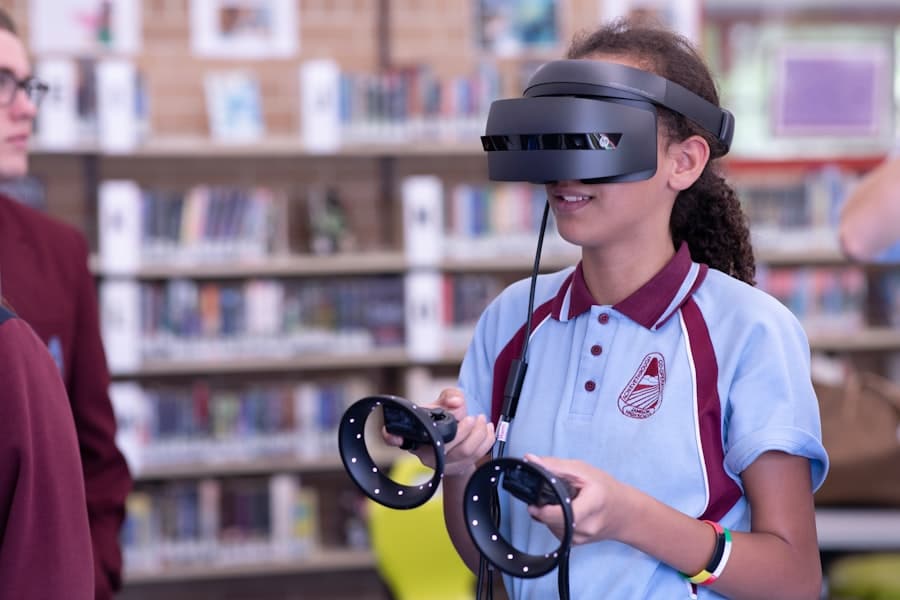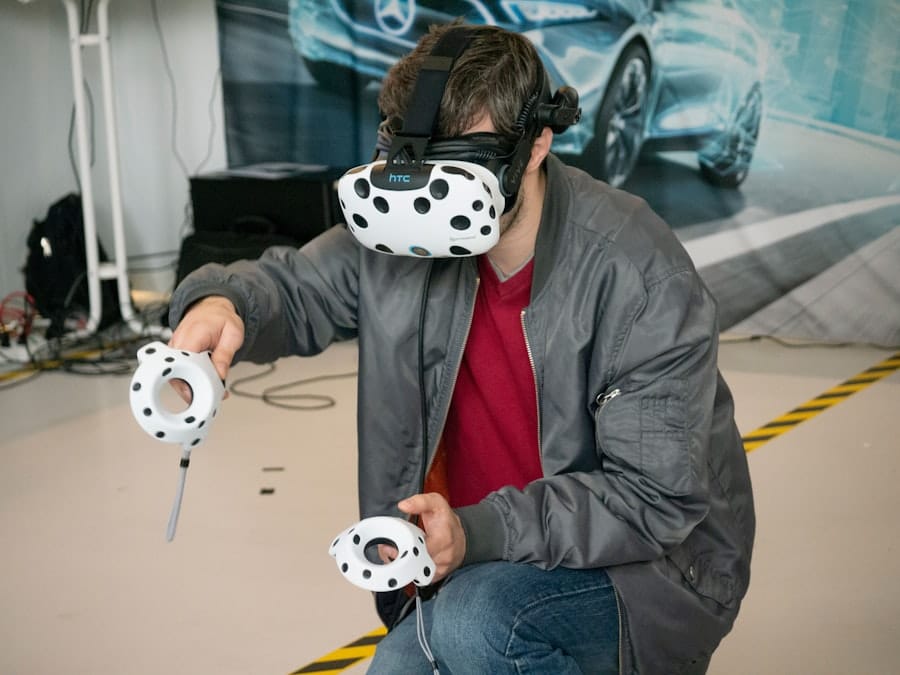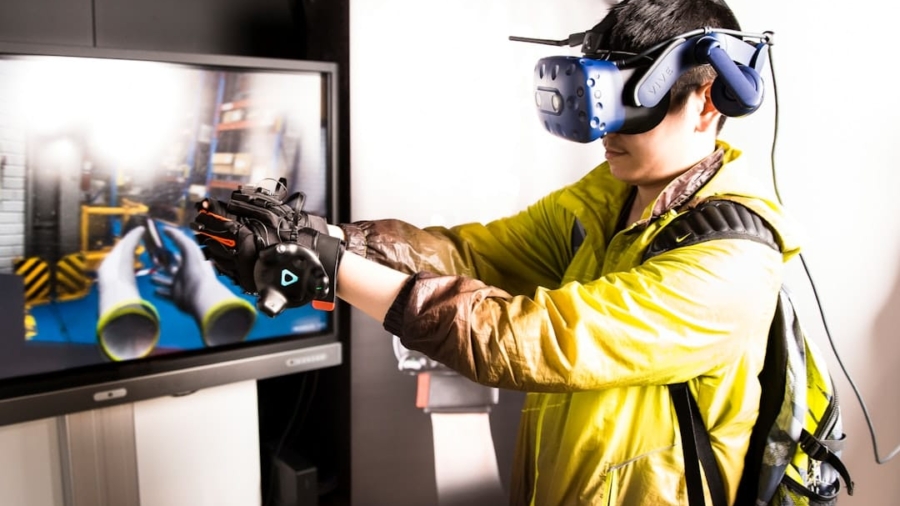Mixed reality (MR) represents a convergence of the physical and digital worlds, creating immersive experiences that blend real and virtual elements. In the realm of competitive gaming, MR is not merely a technological novelty; it is a transformative force that reshapes how players interact with games and how audiences engage with competitive events. By integrating augmented reality (AR) and virtual reality (VR), mixed reality allows for a more dynamic and interactive gaming environment, where players can manipulate digital objects in real time while remaining aware of their physical surroundings.
This fusion of realities opens up new avenues for gameplay, strategy, and spectator engagement, making it a pivotal aspect of the future of competitive gaming. The rise of mixed reality in competitive gaming is fueled by advancements in hardware and software technologies. Devices such as Microsoft’s HoloLens and the Oculus Quest have made MR more accessible, allowing developers to create innovative gaming experiences that were previously unimaginable.
As the gaming industry continues to evolve, the integration of MR is becoming increasingly prevalent, offering players unique ways to compete and collaborate. This article delves into the current applications of mixed reality in gaming, its potential impact on competitive play, the challenges it faces, and its implications for esports tournaments and viewer experiences.
Key Takeaways
- Mixed reality combines elements of virtual and augmented reality to create immersive gaming experiences in competitive gaming.
- Current applications of mixed reality in gaming include enhancing player performance, creating interactive environments, and providing unique viewing experiences for spectators.
- Mixed reality has the potential to revolutionize competitive gaming by providing new ways for players to interact with the game environment and for spectators to engage with the competition.
- Challenges and limitations of mixed reality in competitive gaming include technical issues, cost barriers, and potential concerns about fairness and accessibility.
- The integration of mixed reality in esports tournaments can enhance the overall experience for both players and viewers, creating new opportunities for engagement and entertainment.
Current Applications of Mixed Reality in Gaming
Mixed reality has found its footing in various gaming genres, from first-person shooters to puzzle games, each leveraging the technology to enhance gameplay. One notable example is “Pokemon GO,” which utilizes augmented reality to overlay digital creatures onto the real world, encouraging players to explore their physical environments while engaging in competitive battles and community events. This game not only popularized AR but also demonstrated how mixed reality can foster social interaction among players, blurring the lines between competition and collaboration.
Another significant application of mixed reality is found in games like “Beat Saber,” where players use VR headsets to slice through blocks representing musical beats. While primarily a VR experience, the game incorporates elements that could easily transition into a mixed reality format, allowing players to interact with their surroundings while maintaining the rhythm-based gameplay. The potential for MR in rhythm games is vast, as it can create immersive environments that respond to players’ movements, enhancing both the challenge and enjoyment of the game.
The Potential Impact of Mixed Reality on Competitive Gaming

The integration of mixed reality into competitive gaming has the potential to revolutionize how games are played and experienced.
In traditional gaming formats, players often rely on two-dimensional screens that limit their spatial awareness.
However, with MR, players can visualize game elements in three-dimensional space, allowing for more complex strategies and tactics. For instance, in a first-person shooter game, players could use MR to project enemy positions or map out tactical routes in real time, providing a substantial advantage over opponents who are confined to flat displays. Moreover, mixed reality can facilitate new forms of competition that blend physical skill with digital prowess.
This hybrid format not only tests players’ physical abilities but also their cognitive skills as they adapt to changing scenarios in real time. Such innovations could lead to entirely new genres of competitive gaming that prioritize agility, strategy, and adaptability.
Challenges and Limitations of Mixed Reality in Competitive Gaming
Despite its promising potential, mixed reality in competitive gaming faces several challenges that must be addressed for widespread adoption. One significant hurdle is the technological barrier associated with MR devices. High-quality mixed reality experiences often require expensive hardware that may not be accessible to all players.
This disparity can create an uneven playing field where only those with the latest technology can fully engage with MR features, potentially alienating a portion of the gaming community. Additionally, there are concerns regarding user experience and comfort. Prolonged use of MR headsets can lead to physical discomfort or motion sickness for some users, which could hinder performance during competitive play.
Developers must prioritize creating comfortable and intuitive interfaces that minimize these issues while maximizing immersion. Furthermore, ensuring that MR experiences are inclusive and accessible to players with varying levels of ability is crucial for fostering a diverse competitive gaming environment.
The Integration of Mixed Reality in Esports Tournaments
As esports continue to gain traction as a legitimate form of competition, the integration of mixed reality into tournaments presents exciting possibilities. Major esports events could incorporate MR elements to enhance both player performance and spectator engagement. For example, during live tournaments, players could wear MR headsets that provide real-time data overlays about their opponents’ strategies or health metrics, allowing for more informed decision-making during matches.
Moreover, mixed reality can transform how audiences experience esports events. Spectators could use AR devices to view live stats or player information projected onto their surroundings while watching matches unfold on stage. This level of interactivity could deepen audience engagement and create a more immersive viewing experience.
Additionally, incorporating MR into tournament broadcasts could allow for innovative storytelling techniques that highlight key moments or strategies during gameplay, making matches more exciting and accessible to viewers.
The Role of Mixed Reality in Enhancing Viewer Experience

The viewer experience in competitive gaming is crucial for maintaining audience interest and engagement. Mixed reality has the potential to elevate this experience by providing interactive elements that allow viewers to feel more connected to the action on screen. For instance, using AR applications, fans could visualize game statistics or player movements in real time as they watch a match unfold from their homes or at live events.
This added layer of information can enhance understanding and appreciation for the strategies employed by professional players. Furthermore, mixed reality can facilitate social interactions among viewers during esports events. Imagine a scenario where fans attending a live tournament can use AR glasses to see each other’s avatars or digital representations while cheering for their favorite teams.
This social aspect can create a sense of community among fans, fostering connections that extend beyond the event itself. By enhancing viewer engagement through mixed reality technologies, esports organizations can cultivate a loyal fan base that actively participates in the competitive gaming ecosystem.
The Future of Mixed Reality Hardware and Software in Competitive Gaming
The future of mixed reality hardware and software in competitive gaming is poised for significant advancements as technology continues to evolve. Companies are investing heavily in research and development to create more sophisticated MR devices that offer improved performance, comfort, and accessibility. For instance, next-generation headsets may feature lighter designs with enhanced field-of-view capabilities and better resolution, allowing for more immersive experiences without compromising user comfort.
On the software side, developers are exploring new ways to integrate MR into existing games while creating entirely new titles designed specifically for mixed reality environments. As game engines become more adept at handling complex interactions between physical and digital elements, we can expect an influx of innovative gameplay mechanics that leverage MR technology. This evolution will likely lead to a broader acceptance of mixed reality within the competitive gaming community as players recognize its potential to enhance their skills and experiences.
The Ethical and Social Implications of Mixed Reality in Competitive Gaming
As with any emerging technology, mixed reality in competitive gaming raises ethical and social considerations that warrant careful examination. One primary concern is the potential for increased surveillance and data collection through MR devices. As players engage with these technologies, they may inadvertently share personal data or be subjected to tracking systems that monitor their movements and behaviors during gameplay.
Ensuring player privacy and data security will be paramount as developers navigate these challenges. Additionally, there are social implications related to accessibility and inclusivity within mixed reality gaming environments. As MR technology becomes more prevalent, it is essential to consider how it impacts players with disabilities or those who may not have access to high-end hardware.
Developers must strive to create inclusive experiences that cater to diverse audiences while promoting fair competition among all participants. In conclusion, mixed reality holds immense potential for transforming competitive gaming by enhancing gameplay experiences, fostering community engagement, and reshaping how tournaments are conducted. However, addressing the challenges associated with technology access, user comfort, ethical considerations, and inclusivity will be crucial for realizing this potential fully.
As we move forward into an era where mixed reality becomes increasingly integrated into competitive gaming landscapes, ongoing dialogue among developers, players, and stakeholders will be essential for navigating this exciting frontier responsibly.
In exploring the potential of mixed reality in competitive gaming, it’s essential to consider the broader technological trends shaping the industry. An insightful article that complements this discussion is Top Trends on LinkedIn 2023, which delves into the latest innovations and shifts in technology and social media. This article provides a comprehensive overview of emerging trends that could influence the development and adoption of mixed reality technologies in gaming, offering a broader context for understanding how these advancements might integrate into competitive gaming environments.
FAQs
What is mixed reality in competitive gaming?
Mixed reality in competitive gaming refers to the integration of virtual and physical elements in a gaming environment. It allows players to interact with both real-world and virtual objects simultaneously, creating a more immersive and engaging gaming experience.
How is mixed reality currently being used in competitive gaming?
Mixed reality is currently being used in competitive gaming for various purposes, including enhancing the viewing experience for spectators, providing players with more immersive gameplay experiences, and creating new opportunities for interactive and engaging gaming content.
What are some potential future applications of mixed reality in competitive gaming?
Some potential future applications of mixed reality in competitive gaming include the development of more advanced and immersive gaming environments, the integration of real-world physical elements into virtual gameplay, and the creation of new opportunities for interactive and engaging gaming experiences.
What are the benefits of using mixed reality in competitive gaming?
The benefits of using mixed reality in competitive gaming include enhanced immersion and engagement for players and spectators, the ability to create more interactive and dynamic gaming experiences, and the potential for new forms of gameplay and competition.
What are the challenges of implementing mixed reality in competitive gaming?
Some of the challenges of implementing mixed reality in competitive gaming include the technical complexity of integrating virtual and physical elements, the need for specialized hardware and software, and the potential for increased costs and resource requirements.

